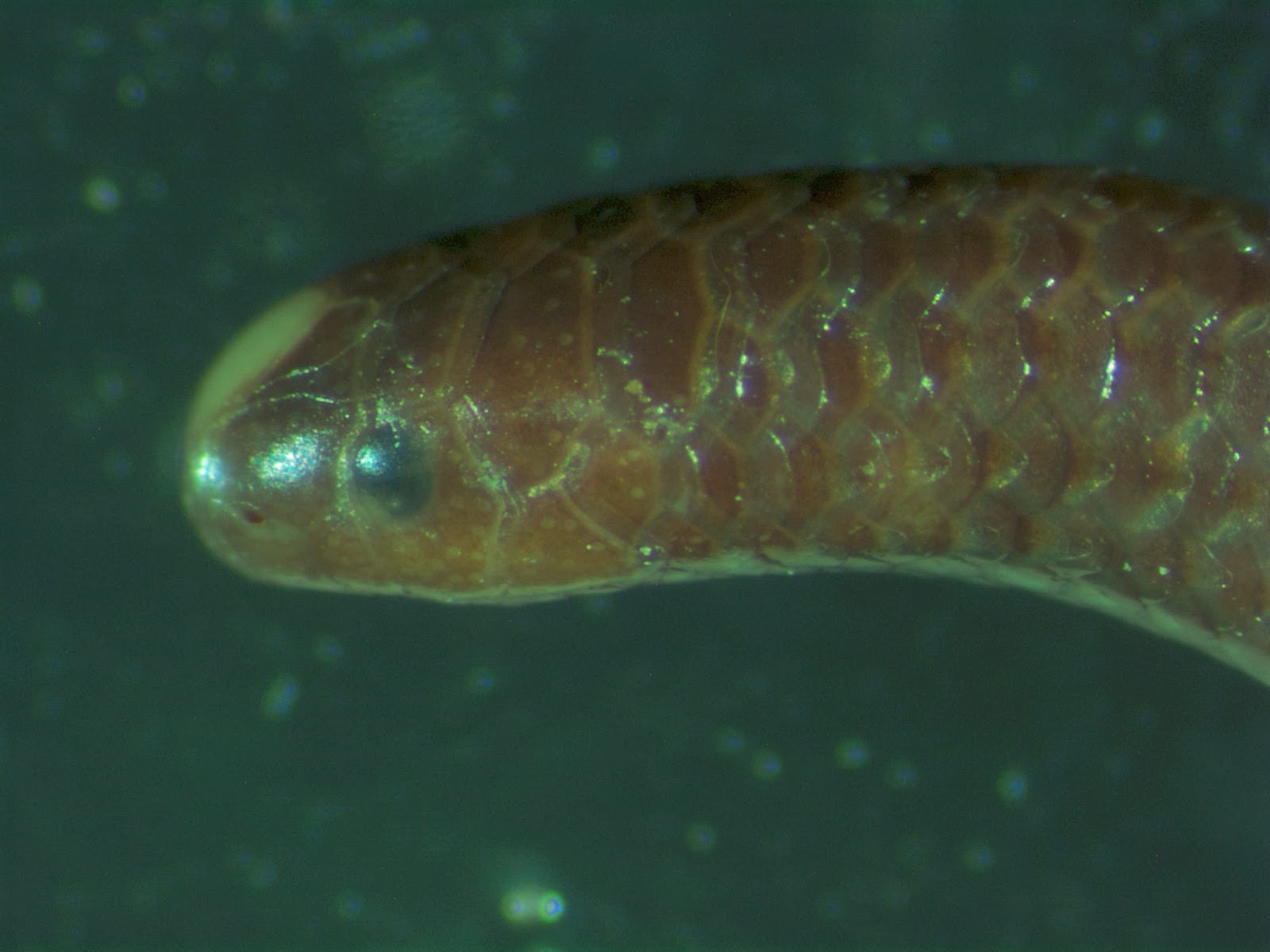 |
| This picture is MINE...but was done with Field Museum equipment, and is for their use. |
Now for something I actually did: This is the head of a silver snake (Leptotyphlops albifrons), a type of thread snake from Argentina. It took forever to get a picture this good! The (dead) specimen had curled such that the head was hard to spread flat, but great side shots like this were still possible. It even shows the cute white spot at the front of the snake - handy, since the tail and head look very much alike on thread snakes. Just one of the many interesting things one can do by volunteering at the Field Museum!
Thread snakes in general are pretty neat, too. There are a few different families of thread snake, but they have enough in common to comfortably be called the same thing and share an entry page. Collectively, are found almost everywhere except Europe and some of the colder parts of northern Asia. Seeing them at all is a problem; these are secretive, quiet creatures that live in the soil and under rocks. Prepare to get your hands dirty.
Thread snakes are also called "worm snakes" or "blind snakes," and with good reason. These snakes look like worms, if not burnt noodles. They are not slimy like worms; that should be your first clue if you happen to pick one up. As seen beneath a microscope, however, these snakes have scales, eyes, nostrils, and a spinal cord, just like every other snake in existence. All of them eat eusocial insects, particularly ants and termites, at all stages of life. Some may also be parthenogenic - capable of reproducing entirely without a male. More on that particular thread snake in another entry, though.
 |
| From National Geographic. Probably the only pic out there. |
Thread snakes are the tiniest snakes in the world. The smallest snake currently on record is the Barbados thread snake (L.carlae). As the name implies, this species is only native to Barbados, an island in the Caribbean. It is so small that it feeds on termites and their larvae. The adult is small enough to, well, fit comfortably on a quarter. The snake may be on the verge of extinction due to habitat threat, but not very much is known about it at all. It was just discovered and identified in 2008, so give it a bit longer.
Oddly enough, these snakes have the proportionately largest eggs of any snake type. The mother lays only one egg...which hatches into a baby almost half her size. Scientists think that, if the babies were any smaller, they would not be able to eat. The opposite case is true with giant pythons, who can lay clutches of hundreds! Size matters - just ask the people who take home Burmese pythons without realizing how monstrously huge they get.
 |
| Source. |
I love volunteering at the Field. I get inspired for so many entries, but only a few of them make the cut. Now, if only I could actually get paid to do things like that photo up top.


